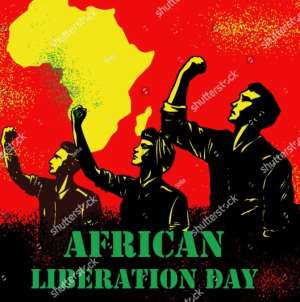
May 25, 2023, marks the 60th annual celebration of Africa Day, formerly the African Liberation Day. On this date 1963, the Organization of African Unity (OAU) was founded. It was an association of 31 independent African states, including Ghana, Egypt, Morocco, Liberia, Libya, Ethiopia, Sierra Leone, and Sudan. Five years before, on April 15, 1958, Ghana hosted the First Congress of Independent African States to discuss forming OAU. The organization vowed to help liberate the other African countries under European colonial rule. Liberia played an essential role in founding OAU. The government allowed future African leaders to travel to other countries under a Liberian passport.
In the US, we assembled at Malcolm X Park in Washington, DC, commemorating African Liberation Day in the 70s and 80s. We listened to speakers, such as Stokely Carmichael (Kwame Ture), discussing the African Liberation and the need to organize. We were committed to the struggle.
The Black civil rights struggle in the US helped motivate the African liberation movement. Future African leaders, including Kwame Nkrumah and Nnamdi Azikiwe, were students in America. They saw the struggle of Blacks against discrimination, segregation, and suppression. Upon returning home, they engaged in independence advocacy. The major colonial powers were Great Britain and France, dominating most parts of Africa. While British colonialism allowed relative freedom for its subjects to administer authority, the French incorporated its colonial countries as part of France.
There were two ideological groups in the OAU, now the African Union; one, the Casablanca Group, and two, the Monrovia Group. “The former advocated a progressive and Pan-African stance on African liberation, calling for the federation of African states. The latter took a conservative view, calling for a gradual approach to unity.” Patrick Lumumba of Congo, Kwame Nkrumah of Ghana, and Sekou Toure of Guinea were of the Casablanca Group, while Felix Houphout-Boigny of Ivory Coast and William Tubman of Liberia were of the Monrovia Group.
In 1960, Liberia made positive history internationally. The country and Ethiopia, former members of the League of Nations, took the case of South West Africa against South Africa. Also, in the 1960s, Liberia became a beacon of the African independence struggle. But in the case, South Africa argued that Liberia did not have the moral standing to advocate against the alleged human suppression because in Liberia, the ruling elites, the Americo-Liberians, suppressed and oppressed the native majority. The late scholar Cyrenus Nyan Forh and others classified the Liberian situation as “Black Colonialism.”
In 1961, Sierra Leone gained independence under the leadership of Milton Margai. He and Siaka Stevens founded the All People’s Congress (APC). Margai was quiet; his brother, Albert, succeeded him. Unlike the Americo-Liberians, in Sierra Leone, the Black American settlers, called Creoles, did not take power upon arrival. They wanted freedom from slavery and established Freetown, Sierra Leone’s capital. Since independence, the African natives, such as the Limbas, Mandes, and Temne, have ruled the country.
The Black civil rights, the 60s Cultural Revolution, and the African liberation movement inspired the advocacy for change in Liberia. For example, the Progressive Alliance of Liberians (PAL), the Union of Liberian Associations in the Americas, the Awina Inc., and the Movement for Justice in Africa (MOJA) engaged in progressive advocacy in the 70s for multi-party democracy in Liberia. Thus in 1980, they helped end the True Whip Party government, which existed for over a hundred years.
Liberia and Sierra Leone, like other African nations, moved from a one-party government to multi-party democracy long after independence. Though African countries have vast productive lands and are no longer under colonial power, they depend on foreign nations for survival.




 No basis for OSP’s request for money laundering probe against Cecilia Dapaah —At...
No basis for OSP’s request for money laundering probe against Cecilia Dapaah —At...
 Ejisu by-election: Group petitions IGP to probe Kwadaso MP over alleged bribery ...
Ejisu by-election: Group petitions IGP to probe Kwadaso MP over alleged bribery ...
 EC dismisses video alleging ballot box staffing
EC dismisses video alleging ballot box staffing
 Landguards are emboldened by influential personalities in society — Security exp...
Landguards are emboldened by influential personalities in society — Security exp...
 I believe God can use me to do something good for Ghana – Dr. Bawumia
I believe God can use me to do something good for Ghana – Dr. Bawumia
 Election 2024: Election Watch Ghana files RTI request demanding information on B...
Election 2024: Election Watch Ghana files RTI request demanding information on B...
 Bad name given Kasoa blocking our business potentials – Residents
Bad name given Kasoa blocking our business potentials – Residents
 We’ll resist attempts by Education Ministry to change school uniforms – Institut...
We’ll resist attempts by Education Ministry to change school uniforms – Institut...
 Don’t deny your husbands sex; it's a form of exercise — Nutritionist advise wive...
Don’t deny your husbands sex; it's a form of exercise — Nutritionist advise wive...
 Appiatse disaster: Akufo-Addo to commission 120 housing units
Appiatse disaster: Akufo-Addo to commission 120 housing units
